
Basics: Understanding LC-MS technologies
Introduction
This post is to help you understand the technologies involved in LC-MS systems. LC-MS systems contain or are configured with mixtures of different types of technologies that give each a different capability. Understanding the different technologies helps you understand the differences between the systems.
Chromatography and MS sources
Standard chromatography
Overview
Standard flow chromatography is the type used on most systems globally. The flow rates are generally in ul/min and columns are 2 or 4mm in diameter. The associated source is well established and uses a mixture of electrical charge, nebulising gas and heating to create the ions for analysis. These systems are generally used for quicker runs (3-30min) and so the mass spec has less time for analysis. This means these methods are generally used to look for a defined set of molecules.
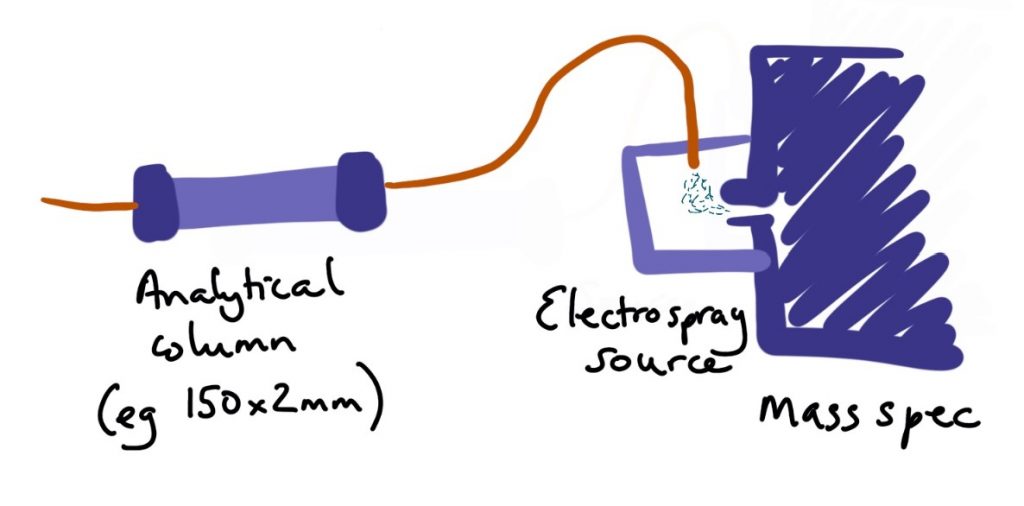
Pros
- This configuration is the most robust and reliable
- There is good linearity of signal with low levels of signal suppression
- Allows fast runs with low levels of wasted time
Cons
- Less sensitive than nano scale systems
- High solvent consumption
- Generally not used for the most complicated samples
Nano-chromatography
Overview
Nano chromatography and the associated nano spray source are used for the most sensitive analyses. It is called nano chromatography as the flow rates are in nL/min ranges. Columns have diameters of less than 1mm, generally at about 75um. Nano spray sources are less well developed with a wide range of configurations and performance, they may or may not have a nebulising gas present and do not use heating. The low flow rates of these systems means it takes longer to move liquid around and so it is generally used for longer rums (60min or more) and the mass spec has more opportunity to measure lots of molecules in complex mixtures.
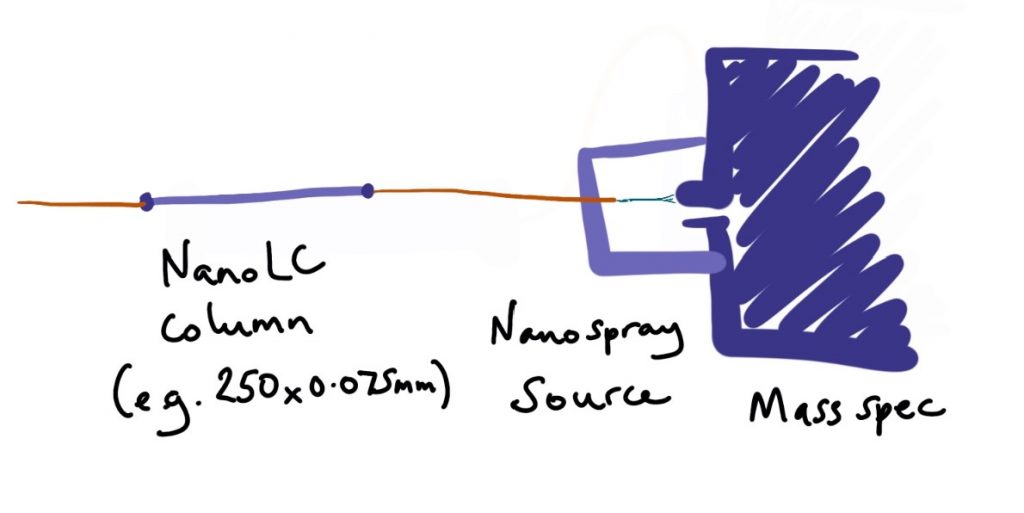
Pros
- The most sensitive configuration
- Low solvent usage
- Can be used for very complex mixtures
Cons
- Low robustness and reliability
- Frequently suffers from ion suppression so signals have less linearity
- Easy to overload and contaminate
- Needs longer runs dues to longer equilibration times
Possible modifications
Low flow standard
Decreasing the column diameter and flow rate can help address some of the issues of higher flow systems and a common term used for this is ‘microflow’. This does increase sensitivity but also decreases robustness.
High flow nano
Lower flow rates give greater sensitivity at the cost of speed. Increasing the flow rate in nano chromatography could slightly reduce sensitivity but significantly increase speed of analysis. The challenge is having the mass spec keep up with it so it will generally only be useful for lower complexity samples.
Ion selection
Quadrupole
Overview
Quadrupoles use a mixture of DC and RF (radio frequency) signals to destabilise all but a narrow range of ions. It is a well-established technology and the most common form of ion selection used. It can work with high complexity mixtures as it ejects everything outside the selection window.
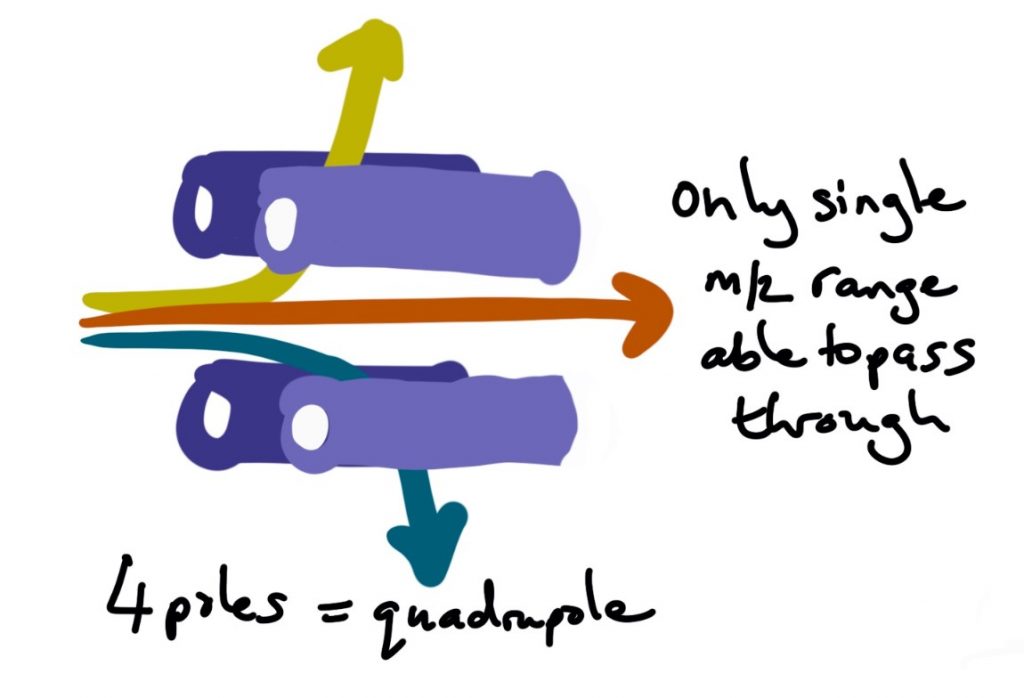
Pros
- Very robust technology but does need infrequent cleaning, especially if abused
- Can deal with complex mixtures, selecting a minor component away from major ones
Cons
- Has no trapping capability so cannot increase sensitivity
- Performance varies between manufacturers with different abilities to select ions effectively
Linear ion trap
Overview
A linear ion trap is similar to a quadrupole but it has electrodes at both ends that allow the trapping of ions. The voltages in the system can be manipulated to eject ions other than a selected range however this means that the trap must be filled first before the selection takes place and all ion traps have a limit to the number of ions that can be put in the trap before they start to repel each other and diminish performance (space charging).
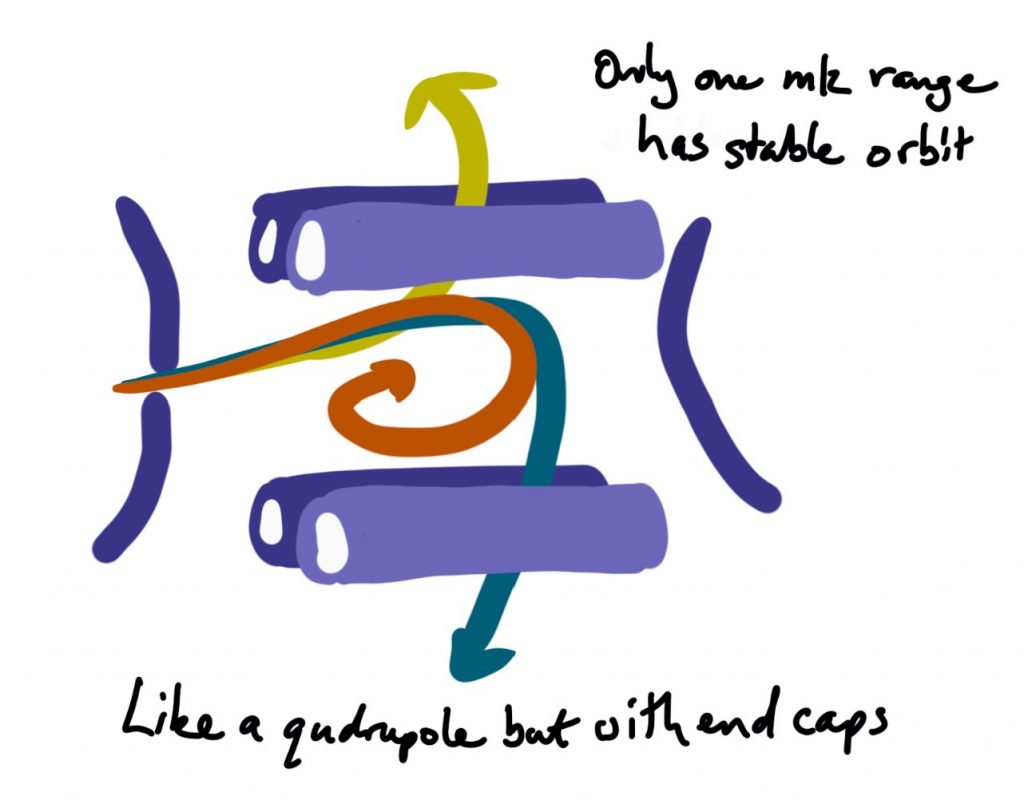
Pros
- Can be very sensitive due to filling if complexity is low
- Can be very robust
- Can work quickly
Cons
- Has poor performance compared to other systems such as quadrupoles
- Can have low sensitivity if you are looking at low abundance ions in a background of high abundance ions these will limit the fill of the trap before selection
Ion fragmentation
Collision cell
Overview
This technology is well established and the most common method of fragmentation. It uses technology like a quadrupole that can guide ions through the cell. The cell is filled with a low level of inert gas and the ions of interest are accelerated into the cell. When the ions collide with gas molecules there is a transfer of energy that creates motion in the ion and it fragments. The fragments keep travelling through the cell and can be further fragmented. This is a continuous process with no ion storage.
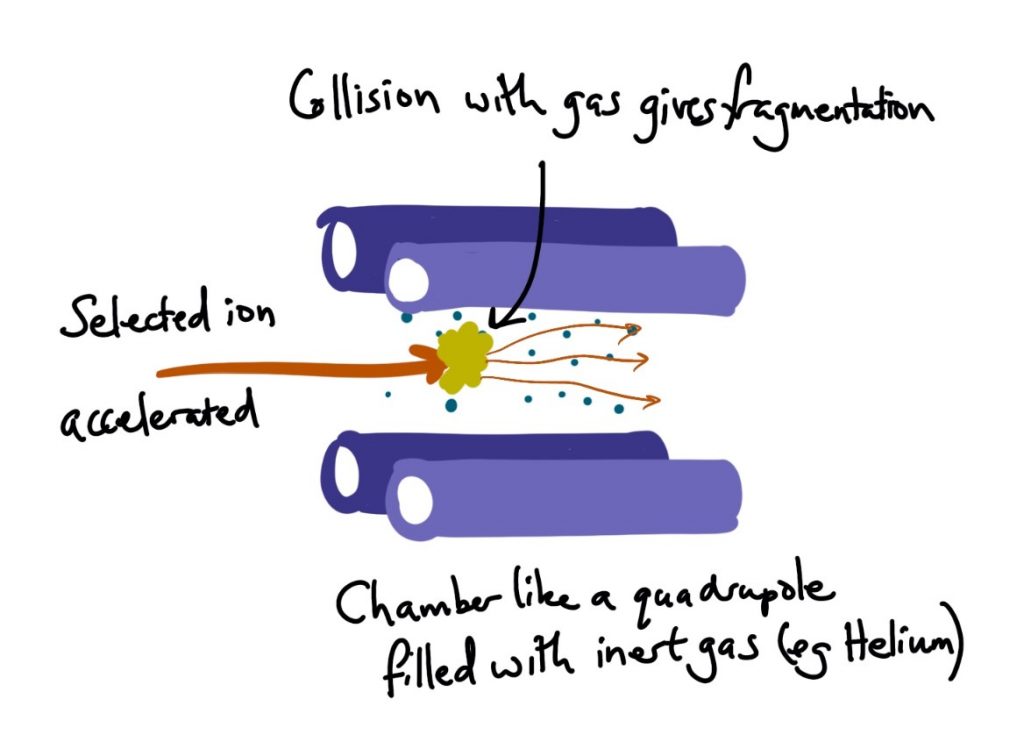
Pros
- Established technology, very robust
- Fragmentation mechanism is known and predictable
Cons
- No ion storage
- Continued fragmentation means less stable fragments get lost
HCD cell
Overview
The High energy Collisional Dissociation (HCD) cell is a variant of the quadrupole where ions are accelerated into a gas filled chamber for fragmentation. However in this instance the ions are slowed and collected before ejection out in the opposite direction. This process allows ion accumulation and provides a similar fragmentation pattern to a standard collision cell but may be subtly different.
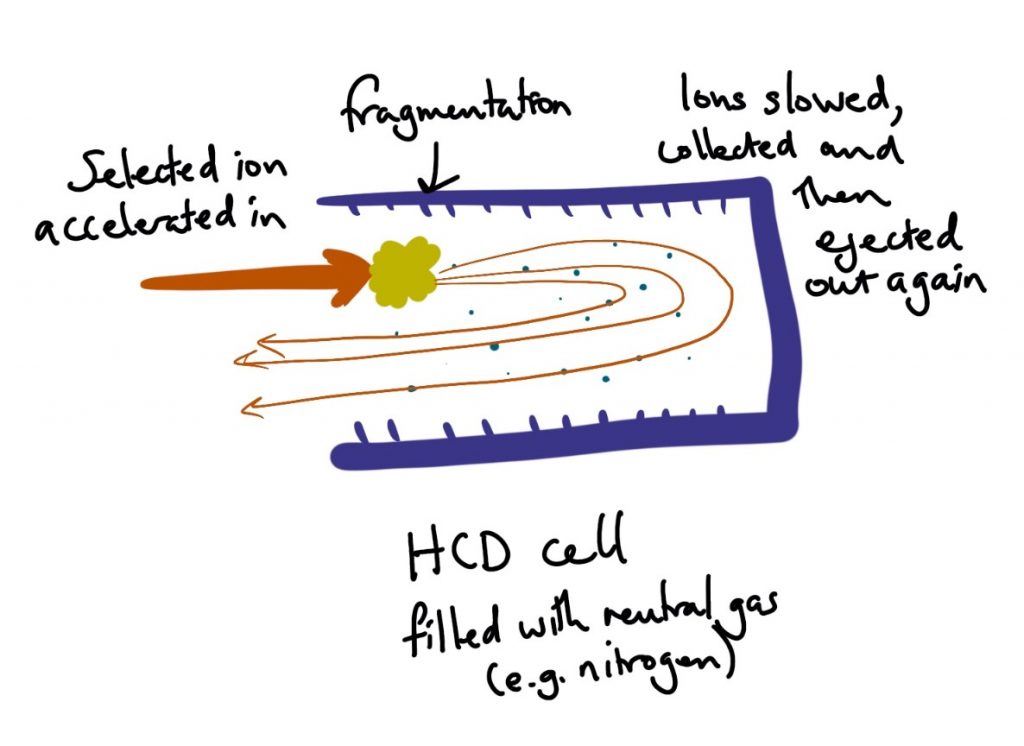
Pros
- Works well
- Allows more complicated experiments with multiple fills
Cons
- Still tend to lose less stable ions
Linear ion trap
Overview
The same linear ion trap described in selection can also be used for fragmentation where a specific ion or m/z range is accelerated within the trap which also contains a small amount of neutral gas. When ions collide with the gas they fragment in to smaller pieces and these pieces are outside the range that are being accelerated and so slow down and stabilise. The traps have difficulty both accelerating and retaining ions and so there is a compromise that results in the loss of ions in the bottom third of the mass range. The ion trap can subsequently accelerate one of the fragments produced and fragment it in a process called MSn. This allows the deepest investigation of molecular structure.
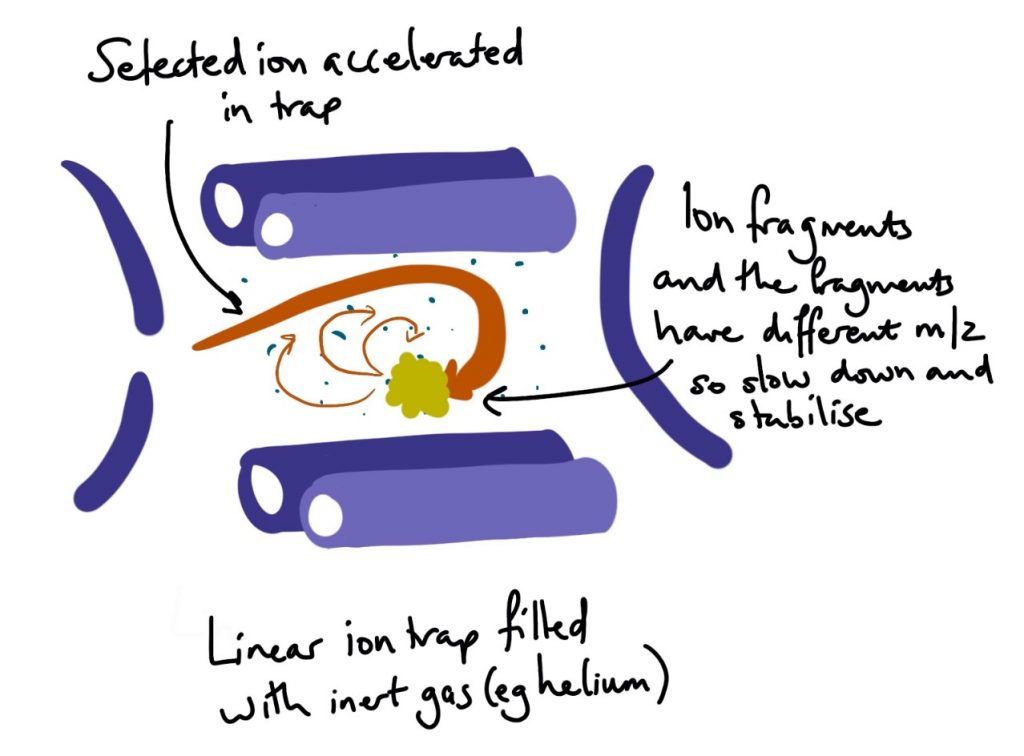
Pros
- Can be very sensitive
- Retains low stability ions so more diagnostic information
- Allows MSn analysis for structural investigations
Cons
- You lose low mass ions
- The addition of unstable ions may make interpretation more difficult
Ion scanning
Orbitrap
Overview
Orbitraps is a type of mass spectrometry that has been commercialised by Thermo. It is uses Fourier Transform (FT) to convert the frequencies of ions orbiting around a central spindle into m/z and intensity information. The process can provide very high resolution spectra if data is collected for long enough – the longer the acquisition the higher the resolution. This means the system is comparative slow at high resolutions but faster at lower resolutions. The FT processing involves de-noising the signal and so spectra can look very clean with flat baselines. This technology has become the dominant form in complex mixtures analysis such as proteomics. The filling of the orbitrap is critical and has to vary according to the amount of ions at any one time point and so fill times need to change meaning the time for a single scan can change a lot (<1uS to 100’s uS -> uS = micro second).
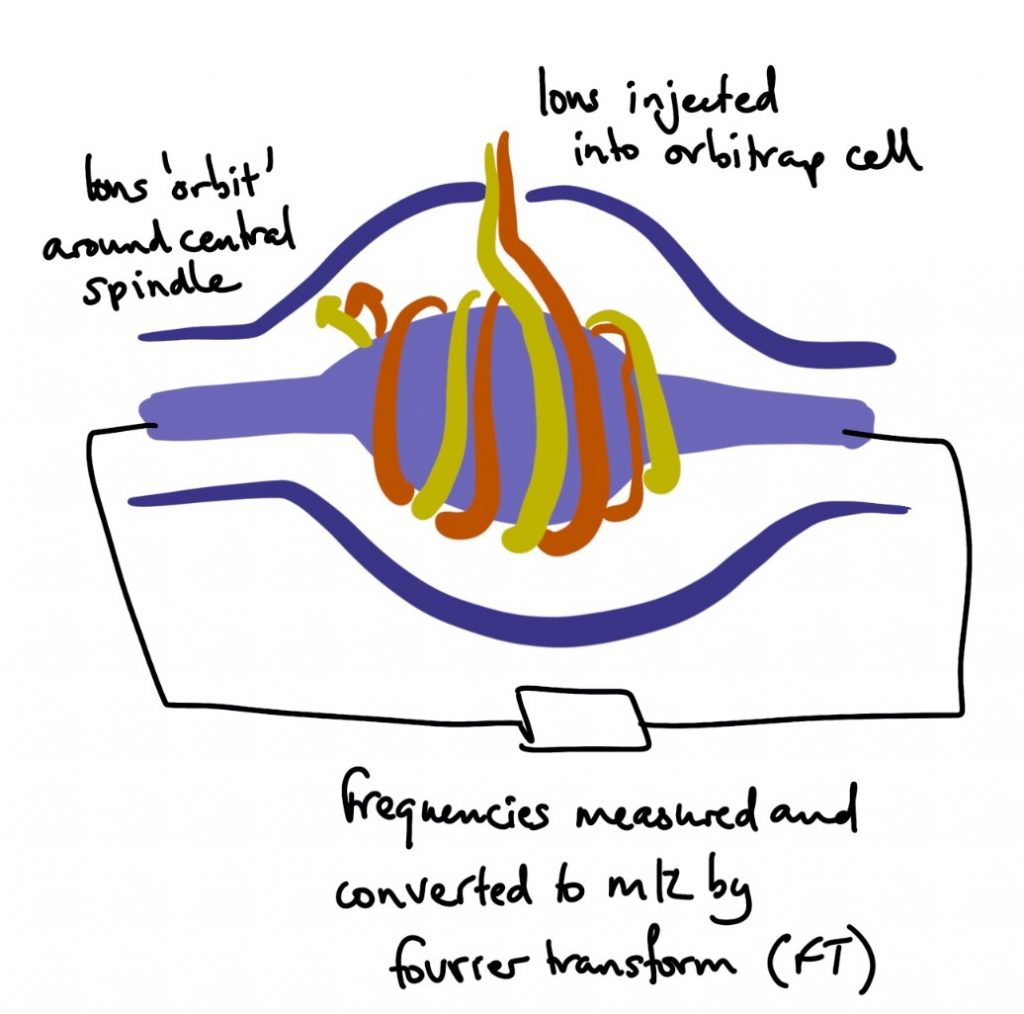
Pros
- Very high resolution possible
- Speed adjustable by changing the resolution
- Lots of software available for processing the data
- Mass accuracy is high and stable (can be <1ppm)
- Variable fill times allow high sensitivity in simple mixtures
- Control software is well developed and allows for many different types of experiments
Cons
- Relatively slow compared to TOFs (generally <20 scans per sec)
- The ion load in the orbitrap has to be managed very carefully so system performance can change substantially as associated technology changes i.e. can be big differences between mass spec that use the same orbitrap technology
- Sensitivity of low abundance signals within a high background can be low
- Variable scan times in normal runs
- Loses resolution as speed increases
Time of flight tube (TOF)
Overview
Time of Flight (TOF) works by giving ions energy from an electrical pulse, which is converted to a velocity controlled by their relative mass and charge ratio. The velocity of the ions is determined by timing their travel through a field free zone similar to measuring the times in a race. The longer the distance travelled by the ions the greater the difference in times that results from the differences in velocity. To help this most systems use ion mirrors called reflectrons to extend the ‘path length’ of the tube. Fine control of the TOF tube can allow higher resolution spectra to be obtained. The possible resolutions from TOF systems are increasing all the time but are generally about 50% or less of that possible in an orbitrap system. Increases in TOF resolution are also linked to a loss in signal/sensitivity. As the TOF process is set to a fixed time it means the scan time is fixed throughout the run. The system combines multiple pushes of ions into a single scan, where the more pushes are collated the better the sensitivity and quality of the data. This means that TOFs can be very fast but signal quality and sensitivity gets lost at higher speeds. The detectors used in this process can be saturated and so to extend the dynamic range of the system they often use signal attenuation which means chopping out some of the ion flows through the system when the signal gets too large. This can lead to issues of smaller signals disappearing through the run.
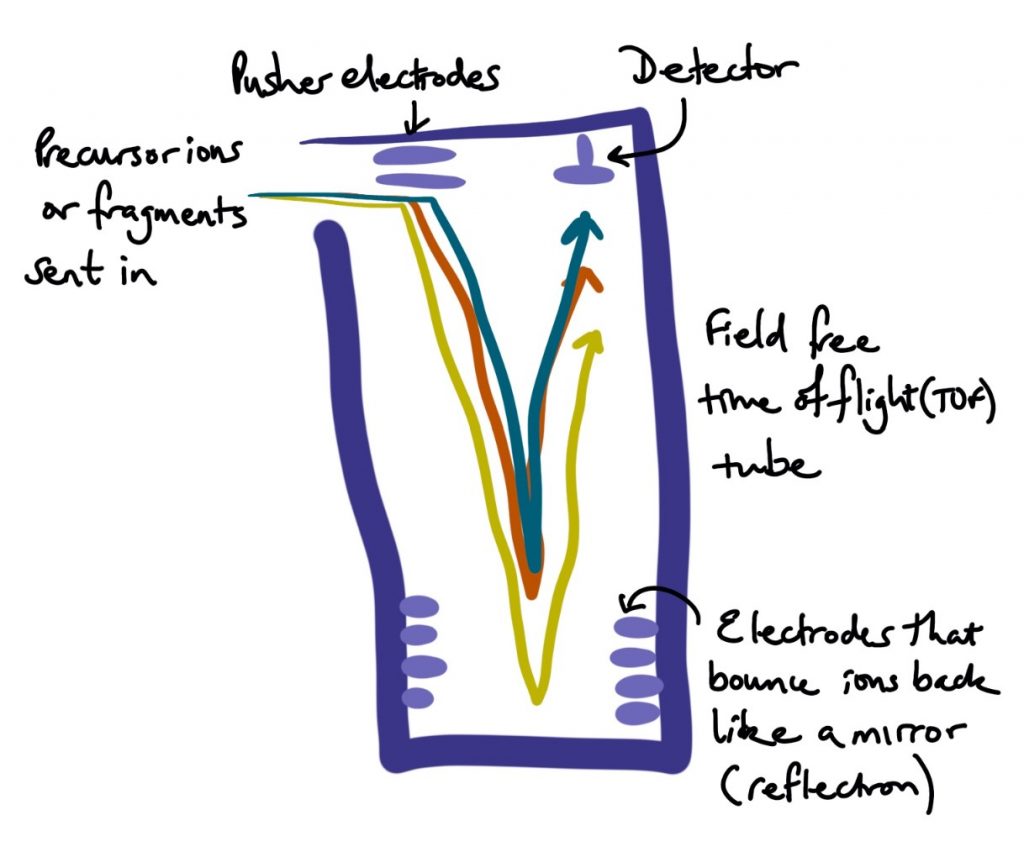
Pros
- TOF systems can work very fast (100+ scans a sec)
- Mass accuracy is high (<5ppm)
- Fixed scan times throughout the run
- High enough resolution is possible for many applications
Cons
- Generally less sensitive than trapping systems
- Lower resolution than orbitraps
- Signal quality and sensitivity drops at higher speeds
- Mass accuracy is often less stable than orbitrap systems (minimal impact)
- Control software generally allows less complicated experiments than orbitrap systems
Linear ion trap
Overview
The same ion trap that has been described in both ion selection and fragmentation can also be used for scanning ions. This works by sequentially ejecting ions to detectors at the side (axial ejection) whereby the smaller the groups of ions ejected the greater the resolution of the spectrum but the slower it takes to do the scan. The settings for scanning can be slightly different to those for selecting and fragmenting ions so systems like Thermo’s Velos mass spectrometer use two linear ion traps connected to each other, one configured for isolation and fragmentation and the other for scanning.
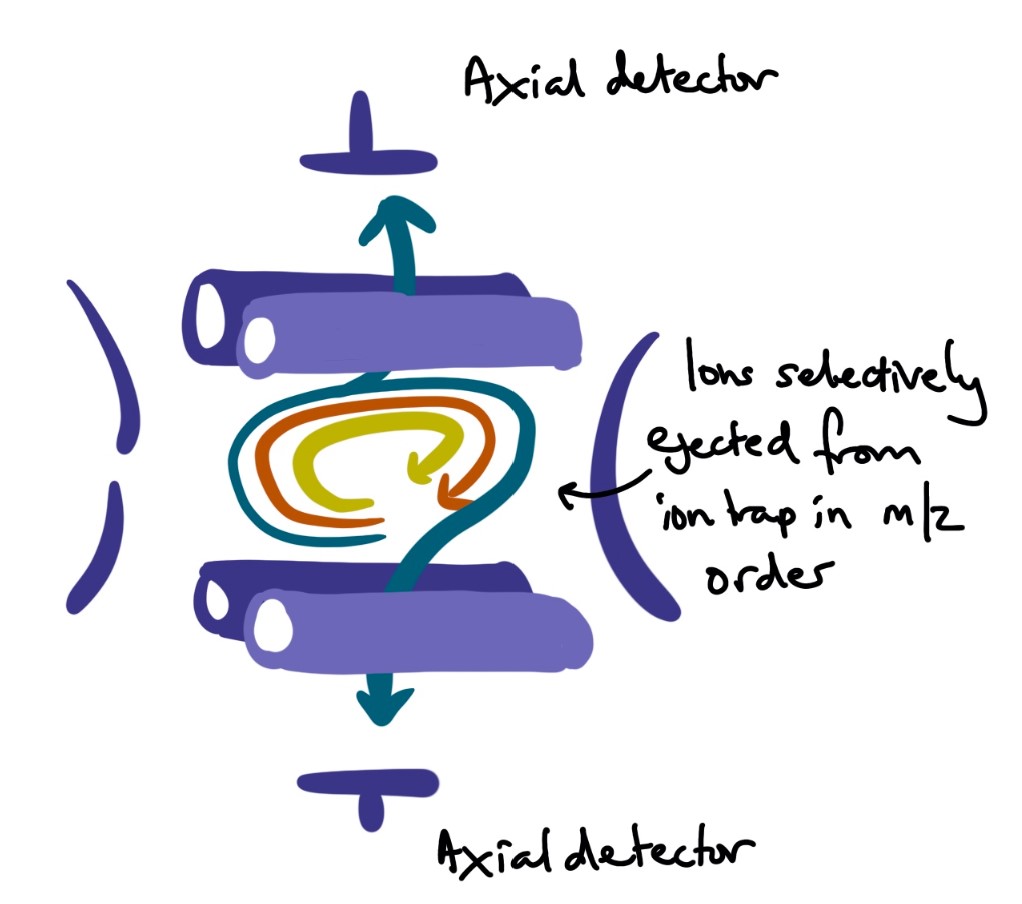
Pros
- Using the same mass spec technology for isolating, fragmenting and scanning ions means that these mass spectrometers can be very small, robust and easy to maintain.
- They can have very high sensitivity with simple mixtures
Cons
- Resolution and speed is low and so only compatible with simple mixtures
- Mass accuracy is low (<500ppm)
Tags: #basics






0 Comments